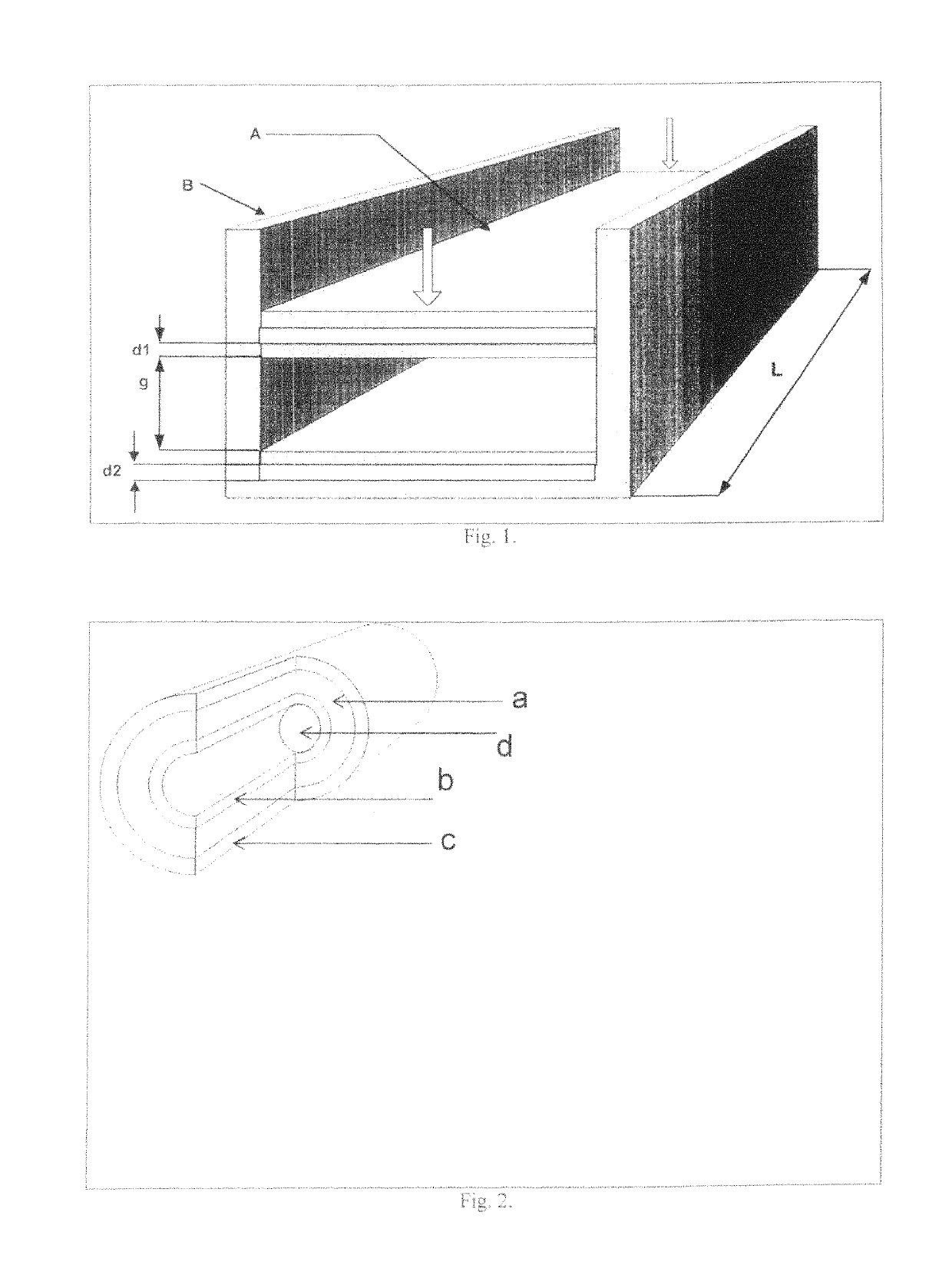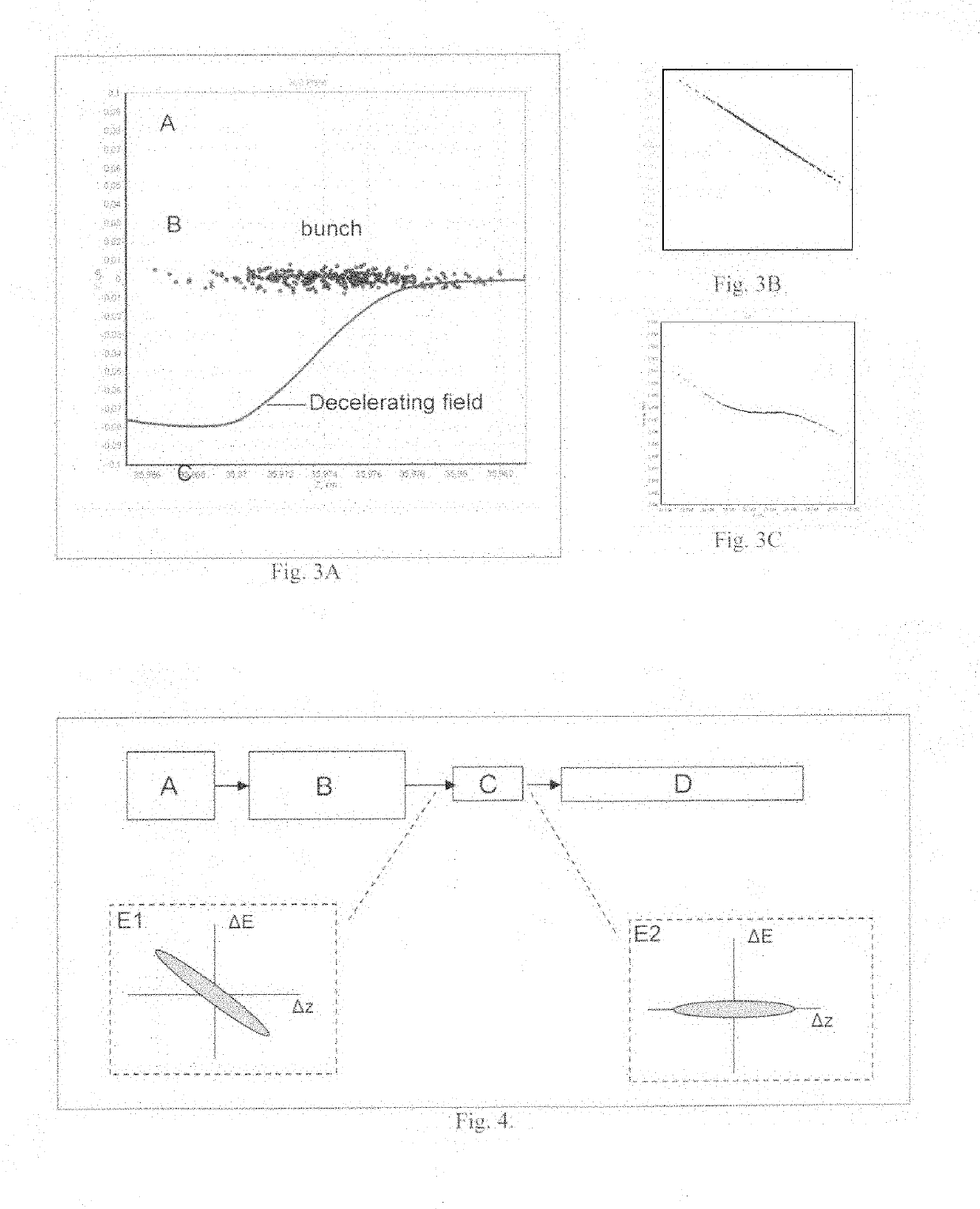Passive method for controlling and correcting energy correlations in charged particle beams
a charged particle and energy correlation technology, applied in the direction of accelerators, laser details, electrical devices, etc., can solve the problems of ineffective attempts to operate the rf cavity beyond the crest after the final bunch compressor, high energy consumption, and high energy consumption, so as to improve the performance of many linear accelerator applications, improve beam quality, and improve the effect of beam quality
- Summary
- Abstract
- Description
- Claims
- Application Information
AI Technical Summary
Benefits of technology
Problems solved by technology
Method used
Image
Examples
Embodiment Construction
[0034]Briefly described according to a broad embodiment of the present invention, geometric configurations and methods of adjusting the characteristics of the aforementioned device are provided. The best mode for carrying out the invention is presented in terms of its preferred embodiment, herein depicted within the Figures.
[0035]1. Detailed Description of the Figures
[0036]A wakefield is the electromagnetic wave emitted by a charged particle passing through a resonant structure. In the case of the dielectric loaded cavities considered here the radiation is emitted via the Cherenkov effect. The radiation couples to the resonant modes of the cavity. In the case of a charged particle bunch the wakefields of the particles add collectively. Particles in the bunch experience different retarding or accelerating forces depending on their relative positions within the bunch. The magnitude and sign of the force on a given particle depends on a number of factors: the total charge of the bunch;...
PUM
 Login to View More
Login to View More Abstract
Description
Claims
Application Information
 Login to View More
Login to View More - R&D
- Intellectual Property
- Life Sciences
- Materials
- Tech Scout
- Unparalleled Data Quality
- Higher Quality Content
- 60% Fewer Hallucinations
Browse by: Latest US Patents, China's latest patents, Technical Efficacy Thesaurus, Application Domain, Technology Topic, Popular Technical Reports.
© 2025 PatSnap. All rights reserved.Legal|Privacy policy|Modern Slavery Act Transparency Statement|Sitemap|About US| Contact US: help@patsnap.com


